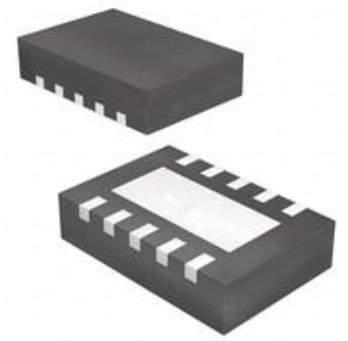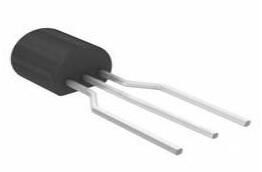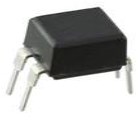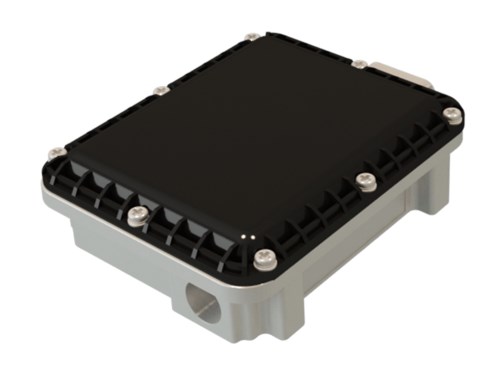Top Switch Detection Technologies Transforming Automotive Systems
0.65mm Specialized Interface IC 3.3V 32-SSOP (0.295, 7.50mm Width) Exposed Pad









0.65mm Specialized Interface IC 3.3V 32-SSOP (0.295, 7.50mm Width) Exposed Pad
Discover how MC33978AEKR2 and other top switch detection technologies are transforming automotive and industrial systems with precision and reliability in 2025.
Product Introduction
Imagine a world where your car reacts faster, industrial systems operate smarter, and safety becomes second nature. Switch detection technologies are making this possible in 2025. These innovations aren’t just about turning things on and off—they’re transforming how automotive systems and industrial machines work. From enhancing precision to boosting reliability, these technologies are the backbone of modern functionality.
Whether it’s capacitive touch interfaces or the MC33978AEKR2, each type of switch brings unique advantages. They improve safety, minimize errors, and ensure seamless operation. And with advanced network integration, these systems connect better than ever. You’ll see how these technologies shape the future of automotive and industrial efficiency.
Capacitive Touch Switch Interfaces for Automotive and Industrial Use
Features of Capacitive Touch Technology
Capacitive touch technology has become a game-changer in modern systems. It works by detecting changes in an electrostatic field when you touch the surface. This allows for seamless and precise interaction. Some standout features include:
Sensitivity: These switches are highly sensitive, ensuring accurate touch detection.
Response Time: They respond instantly, making interactions smooth and efficient.
Durability: With no moving parts, they last longer and require less maintenance.
Color Accuracy: Advanced designs ensure vibrant and clear displays, perfect for high-definition interfaces.
Recent advancements, like hybrid sensors combining capacitive and resistive elements, have further improved sensitivity and durability. These features make capacitive switches ideal for both automotive and industrial applications.
Benefits in Modern Automotive Systems
In vehicles, capacitive touch switches are replacing traditional mechanical controls. You’ve probably noticed them in infotainment systems, climate controls, and even steering wheels. Why the shift? Because they’re sleek, responsive, and reliable.
Studies show that as electric vehicles and autonomous driving gain popularity, the demand for advanced touch interfaces is skyrocketing. Capacitive switches enhance user experience by offering precise control and reducing distractions. Plus, their durability means fewer repairs, saving you time and money.
Industrial Applications of Capacitive Switches
Capacitive switches aren’t just for cars. They’re also transforming industrial systems. Imagine controlling heavy machinery with a simple touch or swipe. These switches make it possible.
Here’s how they perform in industrial settings:
| Metric | Description |
|---|---|
| Efficiency | Quick responses enable fast control of machinery. |
| Reliability | They perform well in demanding environments. |
| Maintenance Benefits | No mechanical parts mean less upkeep. |
By integrating capacitive switches, industries can improve productivity and reduce downtime. Whether it’s in manufacturing or energy sectors, these switches are paving the way for smarter operations.
Hall Effect Switches and Their Role in 2025
Key Features of Hall Effect Technology
Hall Effect technology is all about precision and reliability. These switches work by detecting magnetic fields, which makes them incredibly versatile. Unlike mechanical switches, they don’t rely on physical contact. This eliminates wear and tear, giving you a solution that lasts longer.
What makes them stand out? For starters, they’re compact and lightweight. You can fit them into tight spaces without compromising performance. They also sense magnetic fields through nonferrous materials, which means they work even when obstacles are in the way. Plus, their ability to handle wide voltage ranges makes them perfect for modern systems.
If you’re looking for durability and accuracy, Hall Effect switches are a solid choice. They’re built to handle demanding environments while maintaining top-notch performance.
Advantages in Automotive and Industrial Systems
Hall Effect switches bring a lot to the table for automotive and industrial systems. They reduce the space needed on printed circuit boards (PCBs), which is a big win for compact designs. They also enable high-side sensing without interrupting the ground path, improving current measurement accuracy across a wide range.
Here’s why they’re a game-changer:
They consume less power, which lowers energy loss.
They provide real-time current readings, helping systems optimize energy use.
Their reliability minimizes downtime and maintenance costs.
In automotive applications, these switches enhance efficiency by supporting intelligent control systems. Whether it’s for electric vehicles or advanced safety features, they ensure everything runs smoothly. In industrial settings, they improve productivity by delivering precise and consistent performance.
Use Cases in Safety and Efficiency
You’ll find Hall Effect switches in a surprising variety of applications. They’re used in electric airsoft guns, paintball gun triggers, and even go-kart speed controls. Smartphones and GPS devices also rely on this technology for their compact and reliable designs.
Why are they so popular? Their open-drain output structure and low resistance make them easy to integrate with digital electronics. Variations like micro-power consumption and magnetic pole-independent sensing allow them to adapt to specific needs.
In automotive systems, they play a key role in safety and efficiency. For example, they help monitor speed, position, and current flow with unmatched accuracy. This ensures vehicles operate safely and efficiently, even in challenging conditions.
Optical Switch Detection Systems for Precision
Characteristics of Optical Switch Technology
Optical switch technology stands out for its precision and reliability. These switches use light signals to detect changes, making them incredibly fast and accurate. You’ll find them operating at specific wavelengths, like 1310 nm and 1550 nm, which ensures high sensitivity and minimal interference. They also have impressive durability, lasting over 10 million cycles, and can handle extreme temperatures ranging from -10°C to +60°C.
Here’s a quick look at their core specifications:
| Parameter | Unit | Value |
|---|---|---|
| Working wavelength | nm | 1310±50nm and 1550±50nm |
| Monitoring power accuracy | dB | ±0.25 |
| Switching time | ms | <35 |
| Durability (Life) | times | >107 |
| Operating temperature | ℃ | -10~+60°C |
These features make optical switches ideal for applications where precision and reliability are critical.
Benefits in High-Performance Applications
When it comes to high-performance systems, optical switches deliver unmatched results. They offer a high ON/OFF power ratio of over 60 dB, ensuring efficient signal transmission. Plus, their bit error rate (BER) is as low as 1E-9, meaning they operate without errors.
Take a look at their performance metrics:
| Metric | Value |
|---|---|
| ON/OFF Power Ratio | > 60 dB |
| Bit Error Rate (BER) | 1E-9 (error-free operation) |
| Packet Loss Rate | < 3.0E-10 after 10 days |
These benefits make optical switches perfect for automotive systems, where precision is key to safety and efficiency. They also shine in industrial settings, ensuring smooth operations in high-demand environments.
Automotive and Industrial Use Cases
You’ll see optical switches in action across various automotive and industrial applications. In cars, they’re used for advanced driver-assistance systems (ADAS), where quick and accurate responses are essential. They also play a role in managing vehicle-to-network communication, ensuring seamless connectivity.
In industrial systems, optical switches help control complex machinery with precision. They’re especially useful in environments where electromagnetic interference could disrupt traditional switches. Their ability to handle harsh conditions makes them a reliable choice for factories and power plants.
Whether it’s improving safety in vehicles or boosting productivity in industrial operations, optical switches are paving the way for smarter, more efficient systems.
Magnetic Reed Switches for Harsh Environments
Overview of Magnetic Reed Technology
Magnetic reed switches are simple yet powerful devices that excel in harsh environments. They operate by using a magnetic field to open or close electrical circuits. This design eliminates the need for physical contact, making them highly reliable. Their hermetically sealed construction protects the internal components from dust, moisture, and other contaminants. This makes them perfect for demanding applications in both automotive and industrial settings.
What sets reed switches apart is their ability to function without a constant power supply. This feature makes them energy-efficient, especially in battery-powered systems. They’re also incredibly durable, with some models lasting tens of millions of switching cycles. Whether you’re dealing with extreme temperatures or mechanical stress, these switches are built to last.
Advantages in Durability and Reliability
Reed switches are designed to withstand the toughest conditions. Rigorous testing ensures their reliability in real-world scenarios. Here’s how they’re tested:
Load cycling to simulate repeated use.
Temperature cycling to handle extreme heat and cold.
Humidity exposure to test performance in wet environments.
Mechanical stress assessments to ensure durability.
Storage tests to check for long-term reliability.
These tests prove that reed switches can handle the challenges of an automotive environment. They’re less prone to malfunction compared to other circuits, thanks to their straightforward design. Their protective casings further enhance their durability, making them a trusted choice for critical applications.
Applications in Automotive and Industrial Settings
Reed switches shine in both automotive and industrial environments. In cars, they’re used in ABS systems, fuel sensors, and door locks. Their ability to operate in temperatures ranging from -60°C to 125°C makes them ideal for modern vehicles. They’re also energy-efficient, which is crucial for electric and hybrid cars.
In industrial applications, reed switches control machinery and monitor systems with precision. Their long operational life reduces maintenance needs, saving time and money. Whether it’s a factory floor or a power plant, these switches ensure reliable performance in demanding conditions.
Reed switches are also gaining popularity in the waterproof sensor market. Their adaptability and reliability make them indispensable in today’s complex automotive and industrial systems.
MEMS-Based Switch Detection and the mc33978aekr2 Interface
What is MEMS Technology?
MEMS, or Micro-Electro-Mechanical Systems, is a cutting-edge technology that combines tiny mechanical components with electronics. These systems are so small that they fit on a chip, making them perfect for modern devices. MEMS-based switches are revolutionizing how interfaces work by offering precision and reliability in compact designs.
To understand MEMS better, here’s a breakdown of its defining technical parameters:
| Measurement Type | Description |
|---|---|
| Device Baseline Output | Establish the device baseline output without changing the input. |
| Step Input Signal | Apply a step input signal to the DUT and record the response until it reaches steady-state. |
| Frequency Response | Measure how the device behaves at different frequencies, identifying resonance frequency and bandwidth. |
| Calibration | Establish a calibration curve by measuring the response to a known signal and determining correction coefficients. |
| Noise Measurement | Analyze the signal-to-noise ratio (SNR) by measuring the noise floor and applying a known input signal. |
| Mean Time Between Failures (MTBF) | Calculate the reliability of the device by recording the number of failures over a defined period. |
These parameters highlight the precision and reliability of MEMS technology, making it ideal for multi-switch detection interfaces like the mc33978aekr2.
Benefits of MEMS in Miniaturization and Accuracy
MEMS technology offers incredible benefits in miniaturization and accuracy, especially for automotive applications. Its compact design allows you to save space and reduce weight, which improves vehicle performance and efficiency.
Here’s how MEMS enhances automotive systems:
Miniaturized sensors improve airbag deployment, tire pressure monitoring, and stability control.
Compact designs enable better space utilization in modern vehicles.
MEMS pressure sensors provide high sensitivity, ensuring accurate measurements for critical systems.
In fact, MEMS sensors like accelerometers, gyroscopes, and flow sensors account for 99% of automotive MEMS systems. Their ability to deliver precise data makes them indispensable for advanced automotive interfaces.
Applications in Advanced Automotive Systems
MEMS-based switches are transforming automotive systems by enabling smarter and safer operations. The mc33978aekr2 multi-switch detection interface (MSDI) is a prime example. It supports up to 22 switch inputs, making it ideal for complex automotive applications.
You’ll find MEMS sensors in systems like tire pressure monitoring, electronic stability control, and navigation. Their high sensitivity ensures accurate readings, which are crucial for safety. For instance, MEMS pressure sensors can detect even the smallest changes in tire pressure, helping you avoid accidents.
The mc33978aekr2 interface takes this a step further by integrating multiple switch inputs into a single MSDI. This reduces wiring complexity and improves reliability. Plus, its compact design fits seamlessly into modern vehicles, saving space while enhancing functionality.
MEMS technology isn’t just about miniaturization—it’s about creating smarter systems. By combining precision, reliability, and compactness, MEMS-based interfaces like the mc33978aekr2 are shaping the future of automotive systems.
The Best Network Switch Interfaces for Industrial Systems
Features of Advanced Network Switches
When it comes to industrial systems, the best network switch interfaces are built to handle demanding environments while delivering top-notch performance. These switches are designed with advanced features that make them stand out. Let’s take a closer look at what they offer:
| Feature | Description |
|---|---|
| Protocols | Supports industrial protocols like Modbus TCP, EtherNet/IP, and PROFINET for enhanced integration. |
| Security Measures | Equipped with Access Control Lists (ACLs), MAC address filtering, and network authentication to protect against cyber threats. |
| Configurability | Managed switches offer higher configurability, including VLAN support and Quality of Service (QoS) for traffic prioritization. |
| Ruggedized Construction | Designed to withstand harsh conditions, ensuring reliability in manufacturing and other critical environments. |
| Traffic Management | Emphasizes proactive network traffic management to maximize efficiency and reduce latency. |
These features ensure that your industrial systems stay connected, secure, and efficient, even in the toughest conditions.
Benefits in Industrial Connectivity
Advanced network switches bring significant improvements to industrial connectivity. They enhance data flow efficiency, reduce latency, and increase throughput. Managed switches, in particular, offer up to 40% better throughput compared to unmanaged switches. This means smoother operations and fewer interruptions for your systems.
You’ll also benefit from features like Power over Ethernet (PoE), which simplifies wiring by delivering power and data through the same cable. This is especially useful for devices like IP cameras and wireless access points. Plus, with energy-saving features, these switches help reduce operational costs while maintaining high performance.
In short, the best network switch interfaces improve both the quality and reliability of your wired connections. They’re a smart investment for any industrial setup.
Integration with Automotive Systems
Did you know that advanced network switches are also making their way into automotive systems? With their ability to handle high-speed Ethernet and multiple switch inputs, these switches are perfect for modern vehicles. They support seamless communication between various components, ensuring everything works together efficiently.
For example, managed switches with VLAN support can prioritize critical data, like safety alerts, over less urgent information. This ensures that your car’s systems respond quickly when it matters most. Additionally, ruggedized switches can withstand the harsh conditions often encountered in automotive environments, from extreme temperatures to constant vibrations.
By integrating these high-powered network switch interfaces, automotive systems become smarter, safer, and more reliable. Whether it’s for advanced driver-assistance systems or in-vehicle infotainment, these switches play a crucial role in modernizing vehicles.
Switch detection technologies are reshaping how automotive and industrial systems work. From capacitive touch to MEMS-based designs, each switch offers unique benefits. They improve safety, boost efficiency, and make systems smarter. You’ve seen how these technologies enhance precision and reliability in demanding environments.
Choosing the right switch for your needs is key. Whether it’s for a car or a factory, the right technology ensures long-term success. Don’t forget to consider factors like durability, accuracy, and compatibility with your network. By doing so, you’ll future-proof your systems and stay ahead of the curve.
FAQ
What is the most durable switch detection technology for harsh environments?
Magnetic reed switches are the most durable. They’re sealed to resist dust, moisture, and extreme temperatures. This makes them perfect for tough conditions like automotive and industrial settings.
How do capacitive touch switches improve user experience in cars?
Capacitive touch switches offer precise and responsive controls. They replace traditional buttons, making car interiors sleeker and easier to use. Plus, they reduce distractions by providing smooth, intuitive interactions.
Why are MEMS-based switches ideal for modern vehicles?
MEMS-based switches are compact and highly accurate. They save space and improve performance in systems like tire pressure monitoring and stability control. Their precision ensures safety and reliability.
Can optical switches handle high-performance tasks?
Yes, optical switches excel in high-performance tasks. They’re fast, accurate, and reliable, making them ideal for applications like advanced driver-assistance systems (ADAS) and industrial machinery.
Are network switches used in automotive systems?
Absolutely! Network switches enhance communication between vehicle components. They prioritize critical data, like safety alerts, ensuring quick responses. Their rugged design also withstands the tough conditions inside vehicles.
Specifications
- TypeParameter
- Factory Lead Time17 Weeks
- Mounting Type
The "Mounting Type" in electronic components refers to the method used to attach or connect a component to a circuit board or other substrate, such as through-hole, surface-mount, or panel mount.
Surface Mount - Package / Case
refers to the protective housing that encases an electronic component, providing mechanical support, electrical connections, and thermal management.
32-SSOP (0.295, 7.50mm Width) Exposed Pad - Surface Mount
having leads that are designed to be soldered on the side of a circuit board that the body of the component is mounted on.
YES - Operating Temperature (Max.)125°C
- Operating Temperature (Min.)-40°C
- Packaging
Semiconductor package is a carrier / shell used to contain and cover one or more semiconductor components or integrated circuits. The material of the shell can be metal, plastic, glass or ceramic.
Tape & Reel (TR) - Published2009
- Part Status
Parts can have many statuses as they progress through the configuration, analysis, review, and approval stages.
Active - Moisture Sensitivity Level (MSL)
Moisture Sensitivity Level (MSL) is a standardized rating that indicates the susceptibility of electronic components, particularly semiconductors, to moisture-induced damage during storage and the soldering process, defining the allowable exposure time to ambient conditions before they require special handling or baking to prevent failures
3 (168 Hours) - Number of Terminations32
- ECCN Code
An ECCN (Export Control Classification Number) is an alphanumeric code used by the U.S. Bureau of Industry and Security to identify and categorize electronic components and other dual-use items that may require an export license based on their technical characteristics and potential for military use.
EAR99 - Applications
The parameter "Applications" in electronic components refers to the specific uses or functions for which a component is designed. It encompasses various fields such as consumer electronics, industrial automation, telecommunications, automotive, and medical devices. Understanding the applications helps in selecting the right components for a particular design based on performance, reliability, and compatibility requirements. This parameter also guides manufacturers in targeting their products to relevant markets and customer needs.
Multiple Switch Detection - HTS Code
HTS (Harmonized Tariff Schedule) codes are product classification codes between 8-1 digits. The first six digits are an HS code, and the countries of import assign the subsequent digits to provide additional classification. U.S. HTS codes are 1 digits and are administered by the U.S. International Trade Commission.
8542.39.00.01 - Voltage - Supply
Voltage - Supply refers to the range of voltage levels that an electronic component or circuit is designed to operate with. It indicates the minimum and maximum supply voltage that can be applied for the device to function properly. Providing supply voltages outside this range can lead to malfunction, damage, or reduced performance. This parameter is critical for ensuring compatibility between different components in a circuit.
3V~5.25V - Terminal Position
In electronic components, the term "Terminal Position" refers to the physical location of the connection points on the component where external electrical connections can be made. These connection points, known as terminals, are typically used to attach wires, leads, or other components to the main body of the electronic component. The terminal position is important for ensuring proper connectivity and functionality of the component within a circuit. It is often specified in technical datasheets or component specifications to help designers and engineers understand how to properly integrate the component into their circuit designs.
DUAL - Terminal Form
Occurring at or forming the end of a series, succession, or the like; closing; concluding.
GULL WING - Peak Reflow Temperature (Cel)
Peak Reflow Temperature (Cel) is a parameter that specifies the maximum temperature at which an electronic component can be exposed during the reflow soldering process. Reflow soldering is a common method used to attach electronic components to a circuit board. The Peak Reflow Temperature is crucial because it ensures that the component is not damaged or degraded during the soldering process. Exceeding the specified Peak Reflow Temperature can lead to issues such as component failure, reduced performance, or even permanent damage to the component. It is important for manufacturers and assemblers to adhere to the recommended Peak Reflow Temperature to ensure the reliability and functionality of the electronic components.
NOT SPECIFIED - Number of Functions1
- Supply Voltage
Supply voltage refers to the electrical potential difference provided to an electronic component or circuit. It is crucial for the proper operation of devices, as it powers their functions and determines performance characteristics. The supply voltage must be within specified limits to ensure reliability and prevent damage to components. Different electronic devices have specific supply voltage requirements, which can vary widely depending on their design and intended application.
3.3V - Terminal Pitch
The center distance from one pole to the next.
0.65mm - Time@Peak Reflow Temperature-Max (s)
Time@Peak Reflow Temperature-Max (s) refers to the maximum duration that an electronic component can be exposed to the peak reflow temperature during the soldering process, which is crucial for ensuring reliable solder joint formation without damaging the component.
NOT SPECIFIED - JESD-30 Code
JESD-30 Code refers to a standardized descriptive designation system established by JEDEC for semiconductor-device packages. This system provides a systematic method for generating designators that convey essential information about the package's physical characteristics, such as size and shape, which aids in component identification and selection. By using JESD-30 codes, manufacturers and engineers can ensure consistency and clarity in the specification of semiconductor packages across various applications and industries.
R-PDSO-G32 - Temperature Grade
Temperature grades represent a tire's resistance to heat and its ability to dissipate heat when tested under controlled laboratory test conditions.
AUTOMOTIVE - Interface
In electronic components, the term "Interface" refers to the point at which two different systems, devices, or components connect and interact with each other. It can involve physical connections such as ports, connectors, or cables, as well as communication protocols and standards that facilitate the exchange of data or signals between the connected entities. The interface serves as a bridge that enables seamless communication and interoperability between different parts of a system or between different systems altogether. Designing a reliable and efficient interface is crucial in ensuring proper functionality and performance of electronic components and systems.
SPI - Length11mm
- Height Seated (Max)
Height Seated (Max) is a parameter in electronic components that refers to the maximum allowable height of the component when it is properly seated or installed on a circuit board or within an enclosure. This specification is crucial for ensuring proper fit and alignment within the overall system design. Exceeding the maximum seated height can lead to mechanical interference, electrical shorts, or other issues that may impact the performance and reliability of the electronic device. Manufacturers provide this information to help designers and engineers select components that will fit within the designated space and function correctly in the intended application.
2.45mm - Width7.5mm
- RoHS Status
RoHS means “Restriction of Certain Hazardous Substances” in the “Hazardous Substances Directive” in electrical and electronic equipment.
ROHS3 Compliant
Parts with Similar Specs
- ImagePart NumberManufacturerPackage / CaseInterfaceSupply VoltageRoHS StatusPart StatusMounting TypeECCN CodeFactory Lead TimeView Compare
MC33978AEKR2
32-SSOP (0.295, 7.50mm Width) Exposed Pad
SPI
3.3 V
ROHS3 Compliant
Active
Surface Mount
EAR99
17 Weeks
32-BSSOP (0.295, 7.50mm Width)
SPI
5 V
ROHS3 Compliant
Active
Surface Mount
EAR99
12 Weeks
28-SOIC (0.295, 7.50mm Width)
SPI
5 V
ROHS3 Compliant
Active
Surface Mount
EAR99
12 Weeks
32-BSSOP (0.295, 7.50mm Width)
SPI Serial
-
ROHS3 Compliant
Active
Surface Mount
EAR99
12 Weeks
32-SSOP (0.295, 7.50mm Width) Exposed Pad
SPI Serial
-
ROHS3 Compliant
Active
Surface Mount
EAR99
12 Weeks
Datasheet PDF
- Datasheets :
- Environmental Information :
 TPS62175DQCR:Step-Down, Converter, Pinout
TPS62175DQCR:Step-Down, Converter, Pinout01 March 2022980
 PSoC® 4: PSoC 4200M Microcontroller - Technical Overview and Applications
PSoC® 4: PSoC 4200M Microcontroller - Technical Overview and Applications29 February 2024278
 A Comprehensive Guide to OP07CS8#PBF Operational Amplifier
A Comprehensive Guide to OP07CS8#PBF Operational Amplifier06 March 202481
 STM8L052C6T6 Features, Specifications and Applications
STM8L052C6T6 Features, Specifications and Applications24 July 202599
 J113 N-Channel Switch: J113 Transistor Equivalents and Datasheet
J113 N-Channel Switch: J113 Transistor Equivalents and Datasheet26 March 20225156
 Yageo RC0603JR-070RL Alternatives: Best 0603 Zero Ohm Resistor Replacements
Yageo RC0603JR-070RL Alternatives: Best 0603 Zero Ohm Resistor Replacements08 September 2025331
 PC817 Photocoupler : Application, Pinout and Datasheet
PC817 Photocoupler : Application, Pinout and Datasheet30 July 202113270
 TMC2100 VS DRV8825 VS A4988
TMC2100 VS DRV8825 VS A498827 April 20225829
 What is PCB Reflow? High-Speed Signal Reflow Path Analysis
What is PCB Reflow? High-Speed Signal Reflow Path Analysis24 November 20212650
 OLED, QLED, MicroLED: Who is the Next Generation Display Technology?
OLED, QLED, MicroLED: Who is the Next Generation Display Technology?02 September 20222703
 Introduction to Pi Filter
Introduction to Pi Filter19 February 202112775
 Review of Flux-Concentrated Transverse Flux Permanent Magnet Machines
Review of Flux-Concentrated Transverse Flux Permanent Magnet Machines15 December 20231975
 Ten Smart Sensor Technology Trends for IoT Applications
Ten Smart Sensor Technology Trends for IoT Applications20 November 20215968
 The Global Talent Pool for Major Chip Manufacturing Is Still Far From Adequate
The Global Talent Pool for Major Chip Manufacturing Is Still Far From Adequate29 April 2022517
 What is a Radar Sensor?
What is a Radar Sensor?04 September 202010760
 What is Low Pass Filter
What is Low Pass Filter18 November 20215010
NXP USA Inc.
In Stock: 135
United States
China
Canada
Japan
Russia
Germany
United Kingdom
Singapore
Italy
Hong Kong(China)
Taiwan(China)
France
Korea
Mexico
Netherlands
Malaysia
Austria
Spain
Switzerland
Poland
Thailand
Vietnam
India
United Arab Emirates
Afghanistan
Åland Islands
Albania
Algeria
American Samoa
Andorra
Angola
Anguilla
Antigua & Barbuda
Argentina
Armenia
Aruba
Australia
Azerbaijan
Bahamas
Bahrain
Bangladesh
Barbados
Belarus
Belgium
Belize
Benin
Bermuda
Bhutan
Bolivia
Bonaire, Sint Eustatius and Saba
Bosnia & Herzegovina
Botswana
Brazil
British Indian Ocean Territory
British Virgin Islands
Brunei
Bulgaria
Burkina Faso
Burundi
Cabo Verde
Cambodia
Cameroon
Cayman Islands
Central African Republic
Chad
Chile
Christmas Island
Cocos (Keeling) Islands
Colombia
Comoros
Congo
Congo (DRC)
Cook Islands
Costa Rica
Côte d’Ivoire
Croatia
Cuba
Curaçao
Cyprus
Czechia
Denmark
Djibouti
Dominica
Dominican Republic
Ecuador
Egypt
El Salvador
Equatorial Guinea
Eritrea
Estonia
Eswatini
Ethiopia
Falkland Islands
Faroe Islands
Fiji
Finland
French Guiana
French Polynesia
Gabon
Gambia
Georgia
Ghana
Gibraltar
Greece
Greenland
Grenada
Guadeloupe
Guam
Guatemala
Guernsey
Guinea
Guinea-Bissau
Guyana
Haiti
Honduras
Hungary
Iceland
Indonesia
Iran
Iraq
Ireland
Isle of Man
Israel
Jamaica
Jersey
Jordan
Kazakhstan
Kenya
Kiribati
Kosovo
Kuwait
Kyrgyzstan
Laos
Latvia
Lebanon
Lesotho
Liberia
Libya
Liechtenstein
Lithuania
Luxembourg
Macao(China)
Madagascar
Malawi
Maldives
Mali
Malta
Marshall Islands
Martinique
Mauritania
Mauritius
Mayotte
Micronesia
Moldova
Monaco
Mongolia
Montenegro
Montserrat
Morocco
Mozambique
Myanmar
Namibia
Nauru
Nepal
New Caledonia
New Zealand
Nicaragua
Niger
Nigeria
Niue
Norfolk Island
North Korea
North Macedonia
Northern Mariana Islands
Norway
Oman
Pakistan
Palau
Palestinian Authority
Panama
Papua New Guinea
Paraguay
Peru
Philippines
Pitcairn Islands
Portugal
Puerto Rico
Qatar
Réunion
Romania
Rwanda
Samoa
San Marino
São Tomé & Príncipe
Saudi Arabia
Senegal
Serbia
Seychelles
Sierra Leone
Sint Maarten
Slovakia
Slovenia
Solomon Islands
Somalia
South Africa
South Sudan
Sri Lanka
St Helena, Ascension, Tristan da Cunha
St. Barthélemy
St. Kitts & Nevis
St. Lucia
St. Martin
St. Pierre & Miquelon
St. Vincent & Grenadines
Sudan
Suriname
Svalbard & Jan Mayen
Sweden
Syria
Tajikistan
Tanzania
Timor-Leste
Togo
Tokelau
Tonga
Trinidad & Tobago
Tunisia
Turkey
Turkmenistan
Turks & Caicos Islands
Tuvalu
U.S. Outlying Islands
U.S. Virgin Islands
Uganda
Ukraine
Uruguay
Uzbekistan
Vanuatu
Vatican City
Venezuela
Wallis & Futuna
Yemen
Zambia
Zimbabwe











